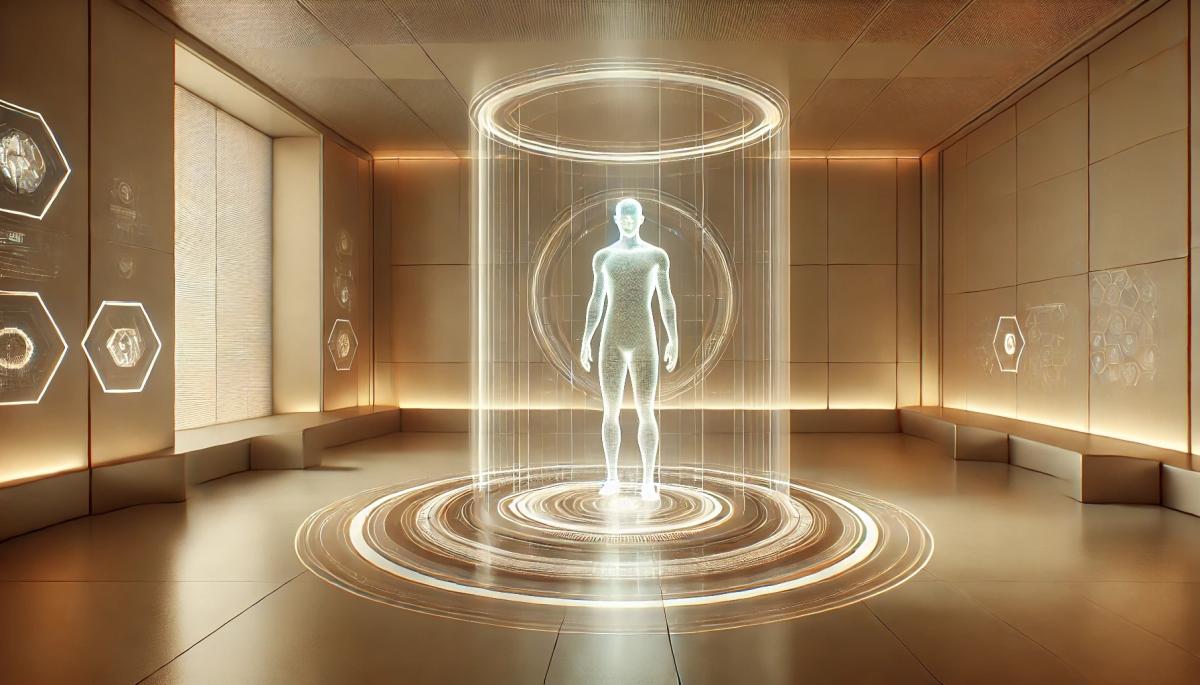Think of the breathtaking vision of the future from the movie Blade Runner – holographic ads, cyberspace, and ubiquitous networks. Can this fiction become reality? Find out what we can expect from the internet of the future and how the boundaries between reality and the virtual world will blur.

Imagine a world where reality and virtual space merge into one. A world where your thoughts travel through the internet at the speed of light and the boundaries between physical and digital are so thin you can barely distinguish them. This isn't just sci-fi fantasy – it's a future that is irreversibly approaching. What internet speeds can we expect in the coming years, and what will they enable?
From outdated dial-up to advanced fiber optics
A few decades ago, the internet was a luxury available to only a select few. Slow dial-up connections and limited data plans were soon replaced by technologies like DSL and cable connections, which brought significant acceleration.
Today, fiber optic connections are becoming the standard, allowing for dizzying speeds of several gigabits per second. This rapid development is mainly driven by increasing demand for data-intensive services, such as streaming high-resolution videos, playing graphically demanding games, and the expansion of the Internet of Things (IoT).
The future belongs to 5G and 6G networks
Imagine a world where downloading a movie takes seconds, video calls are seamless, and smart cities manage traffic with millimeter precision. This isn't sci-fi, but the future that 5G and 6G networks promise us. These technologies promise to accelerate and improve the internet to such an extent that they will change the way we live, work, and experience entertainment.
Current 4G networks, although still improving, are hitting their limits. The ever-increasing amount of data, smartphones, tablets, and other devices require more robust infrastructure. This is where 5G and 6G come into play. With download speeds of up to 10 Gbps for 5G and potentially up to 1 Tbps for 6G, the door opens to applications and services that we have only dreamed of until now.

Imagine a doctor performing surgery remotely using a robot and virtual reality, without the slightest signal delay. Or autonomous vehicles communicating in real-time, preventing accidents. These are just two examples that illustrate the transformative potential of 5G and 6G.
Both networks will not only serve faster internet browsing but will become the foundation for the development of smart cities, autonomous systems, and the Internet of Things, connecting billions of devices. With 6G, we could soon see holograms or haptic technologies, enabling us to feel remote objects by touch.
The transition to 5G and 6G, of course, comes with challenges. Building the necessary infrastructure will require significant investments. Signal coverage will expand gradually and won't be available everywhere immediately.
The internet in virtual and augmented reality: A gateway to new worlds
With the development of the internet, we are slowly but surely entering an era where connectivity is not just about download and upload speeds but about how deeply we can immerse ourselves in the digital world. Virtual and augmented reality (VR/AR) are technologies that promise to change our perspective on the internet and how we use it.
Imagine that instead of browsing traditional web pages, you find yourself inside a virtual room where you can interactively browse products in a store, meet friends in a digital square, or visit distant destinations without leaving your home.
Students will be able to attend virtual classes where they can carry out experiments in laboratories without needing physical equipment. Businesses will be able to organize meetings in virtual offices, where each participant feels like they are in the same room with the others, even though they are scattered around the world.

A quantum revolution is likely ahead
Another technological revolution looms on the horizon that could push the internet into realms unimaginable today – quantum computers. These machines with unprecedented computing power, based on the principles of quantum mechanics, could transform the very fabric of the internet.
Imagine a network that is not only exponentially faster than anything we know today but also unbreakably secure thanks to quantum encryption. Such a network would withstand any hacking attempt and guarantee absolute data protection.

Quantum computers could also speed up and streamline countless online processes, from searching for information and simulating complex systems to developing new materials and drugs. But that's not all. Quantum computers could enable entirely new forms of online services and applications that we can't even imagine today.
Fast and accessible internet is crucial not only for entertainment but also for economic growth, innovation development, and improving the quality of life. It enables the creation of new industries, simplifies remote work, and makes education and information accessible to all without distinction.
Investments in technology and infrastructure open the door to a future where the online world will be accessible to everyone without limitations, and connectivity will drive progress.
Wireless charging: What are its benefits, limitations, and where is it heading?

Wireless charging has evolved from a luxury feature to a standard part of most modern phones. Simply place your mobile on the pad, and energy begins to flow without searching for a cable and connector. We explain how wireless charging works, what it entails, and why Qi and Qi2 technologies have become the new standard of convenience.
What is Wi-Fi 7? What changes does it bring and when does it make sense to switch

Today's home Wi-Fi network is under increasing pressure. It has to handle video calls, online gaming, and dozens of smart devices. The new Wi-Fi 7 standard offers a solution that takes wireless connectivity to the next level. We'll explain what this standard means in practice and why it might be crucial for the future of home and business networks.
What is DNS? Everything you need to know about its functionality and setup

When you type a website address into the browser, the correct page loads in an instant. This is managed by the DNS system, without which the internet as we know it would not exist at all. In this article, you will learn what DNS is, how it works, what types of records it contains, and why it is important for both speed and security of the connection.
How does fiber optic internet work and what do you need for its installation?

Fast and stable connection is a basic necessity in every household today. The solution is fiber optic internet, which works differently than regular cables and offers greater reliability to users. We'll explain how this technology works in practice, what it entails to run a fiber optic cable to your home, and what equipment you’ll need to keep everything running smoothly.
Cloud gaming – the end of consoles in sight?

Cloud gaming allows you to play games from anywhere without the need for expensive hardware. In this article, you'll learn how game streaming works, what advantages and limitations it brings, and which services are leading the way today. And most importantly: can it really threaten traditional consoles?
Chips under the skin and in the head. The future is closer than we think

Brain microchips already allow controlling a computer with mere thoughts. In the article, you will learn how they work, what they have brought to the first users, and what promises scientists and Elon Musk associate with them. Along with hopes, questions about safety, ethics, and where this technology might take us also arise.